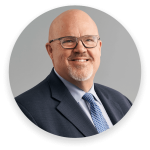 Creating the right organizational chart is just the first step. Behavior change must follow.
Creating the right organizational chart is just the first step. Behavior change must follow.
Why do companies change their operating model? Often they wish to become more agile. Sometimes they hope to increase collaboration. Almost always it has something to do with behavior. But as the overhaul gets underway, facts and data become the focus instead. And by the time organizational charts are drawn up, rolled out to teams and explained, management is exhausted.
Then someone remembers: We did all this to change how our people act. Oh, and those people are worried. Worried the changes aren’t good for them and that they are going to lose some of their power.
In the end, organizations don’t change, people do. And that tired management team still has a lot of work to do.
Cognitive biases’ role in organizational change
Behavioral science teaches that change triggers biases in the way humans process information and perceive threats. We are averse to loss, fear losing control and tend to view everything as a zero-sum game. We perceive losses more acutely than we anticipate gains. It’s quite natural, then, that any new organizational structure immediately sends employees into an examination of their position relative to peers. The new org chart becomes a scorecard: Some people are winning, others are losing.
Even when we understand intellectually that change is for the greater good, we balk when it diminishes our personal authority. One CEO broke down these tendencies by using a sports metaphor. “We’ve been operating like a golf team,” he said, “but now we have to play basketball.”
Metaphors can be clarifying for businesses in transition. Think of moving from a swim team to water polo, from track to soccer, from instrumental soloist to a jazz band, or even from stand-up comedy to membership in an improv troupe. In each case, strong individual performers shift from an environment that tracks and rewards independent effort to one of interdependence, in which success is determined by cooperation.
This CEO’s company still needed and appreciated great talent, as the metaphor helped make clear, but everyone needed to accept the critical importance of contributing to the team.
Anticipating the tough moments critical to organizational change
For any company to reap the full value of an organizational overhaul, its people will need to behave differently than they did in the old system. If they fall back to their old ways of working, the value will be lost.
Transforming behavior requires focusing on a few critical moments during which people will choose either the new behavior or their old habit. These moments of truth can be predicted and planned for. Leading companies do this early in the process, working with employees to anticipate the tricky moments and then ensuring everything from streamlined reports to employee support is in place to encourage adoption of the new way of working.
When a global consumer products company recently updated its operating model, one of the organizational changes was to bring all digital marketing into a centralized marketing department. It was simply too expensive for each business unit to build its own digital capability. This is quite consistent with the direction many organizations are headed today as they look for ways to build interdependencies and move away from autonomous silos. But it can lead to feelings of losing power and control, especially at the business unit level, where marketers now must turn to the center on digital topics.
The company’s executives and staff carefully anticipated which issues were likely to create discord between the business units and the center, talked them over, and decided how they would address them. Business unit heads understood that the solution rested in their hands: By modeling collaboration with the center, they would set the example for staff to do the same in their own work.
It emerged that the moment of truth for the business unit heads would be when they were asked to referee a disagreement between their team and the central digital team. Would they always side with their team against the center, or would they try to find a constructive solution?
To support choosing the constructive solution, the company created feedback loops that ran the duration of the transition. In that feedback, executives sought not only information about how the process was going but also what they themselves could do better. Over time, a pattern emerged in the data. Leaders who learned from this upward feedback and improved were rewarded with strong increases in employee engagement.
Moving forward
In the New York City Marathon, there is a hill at the 15-mile (24-kilometer) mark—the crossing of the East River from Queens to Manhattan over the 59th Street Bridge. It’s one of the greatest challenges of the race, but as runners finish their descent and head north up First Avenue, they know that 11 more miles (18 kilometers) remain.
For executives who have put months into studying what functions their organization needs, how it will be organized, and who reports to whom, it may be hard to accept that they have only finished the first leg of the race. There are many hard miles yet to go, and getting to the finish line depends on helping the humans in the organization change their behavior, too.
Source: Bain





 Startups and scaleups worldwide are facing a make-or-break moment with coronavirus, a health crisis with vast and unprecedented economic consequences. Each entrepreneur is in a unique situation, whether they’re well-funded, planning their next funding round or struggling through the uncertainty.
Startups and scaleups worldwide are facing a make-or-break moment with coronavirus, a health crisis with vast and unprecedented economic consequences. Each entrepreneur is in a unique situation, whether they’re well-funded, planning their next funding round or struggling through the uncertainty.
 by
by Paul is the President of Thirdbridge, a high growth, private equity backed disrupter in the research space. Third Bridge provides institutional investors like private equity firms, hedge funds and mutual funds with the information that they need to make better investments.
Paul is the President of Thirdbridge, a high growth, private equity backed disrupter in the research space. Third Bridge provides institutional investors like private equity firms, hedge funds and mutual funds with the information that they need to make better investments.